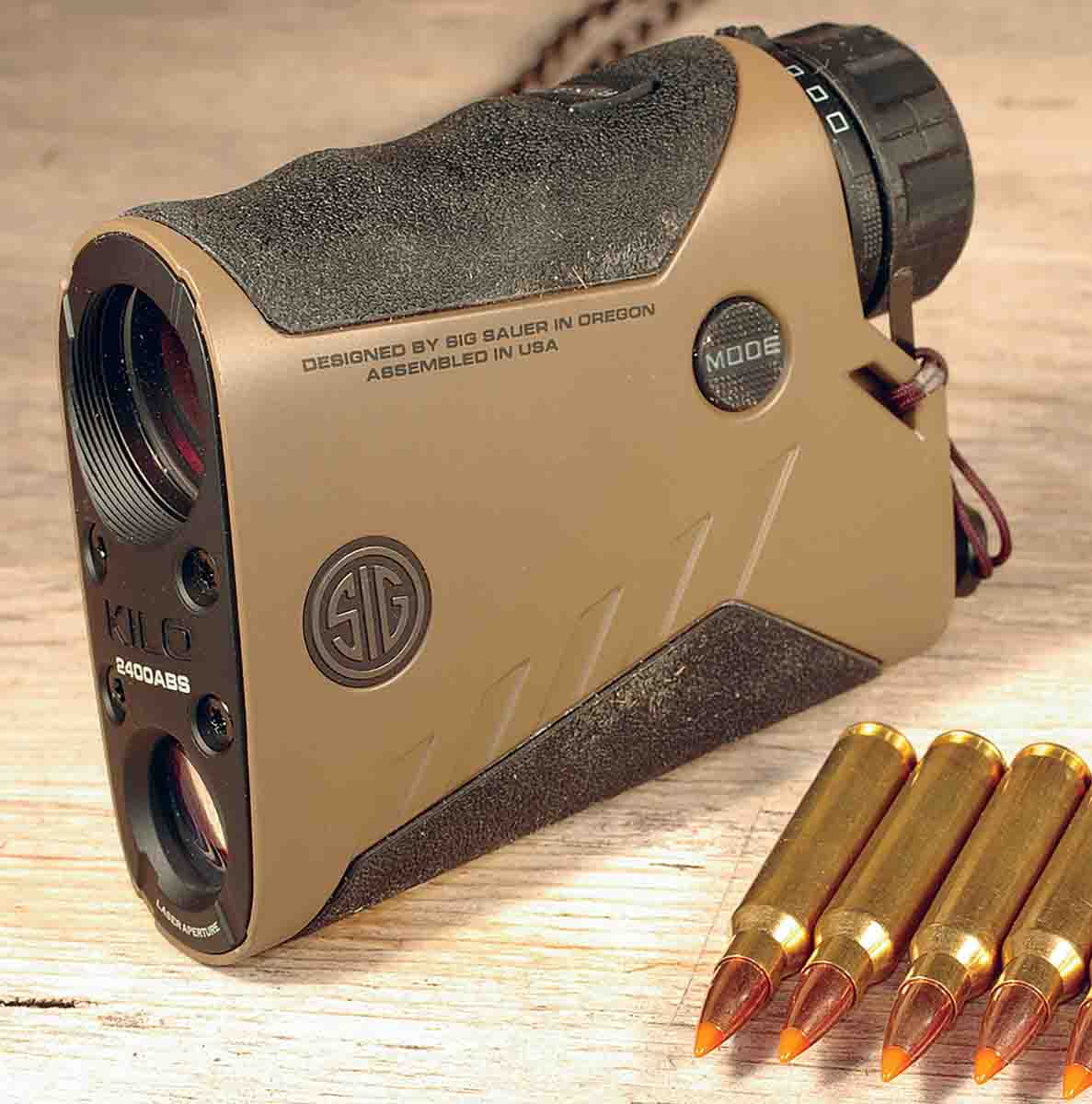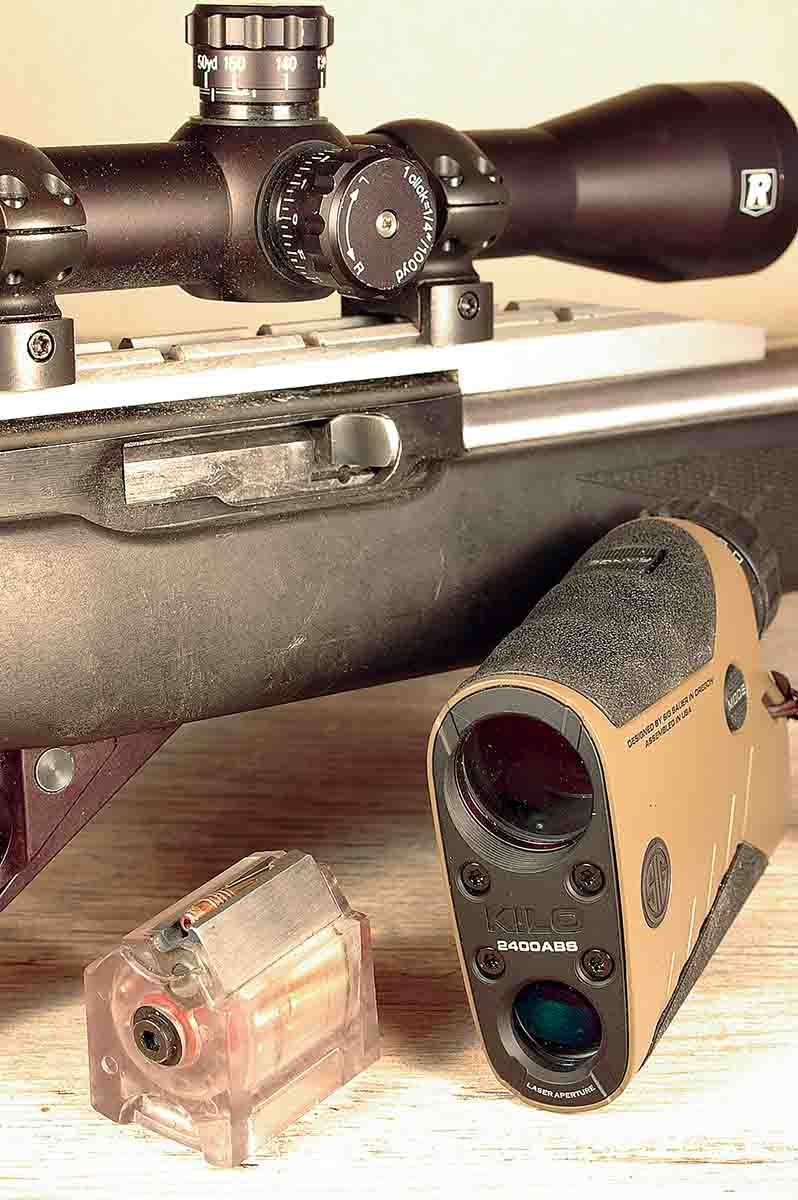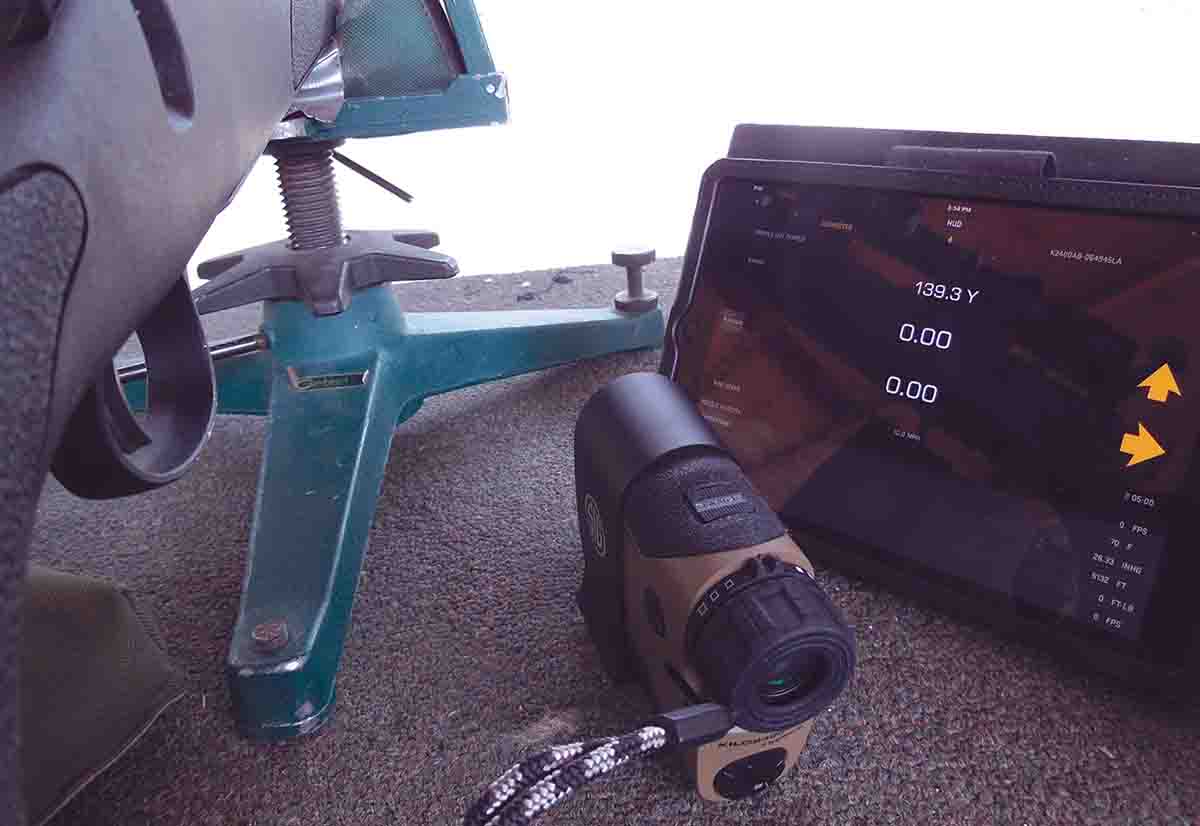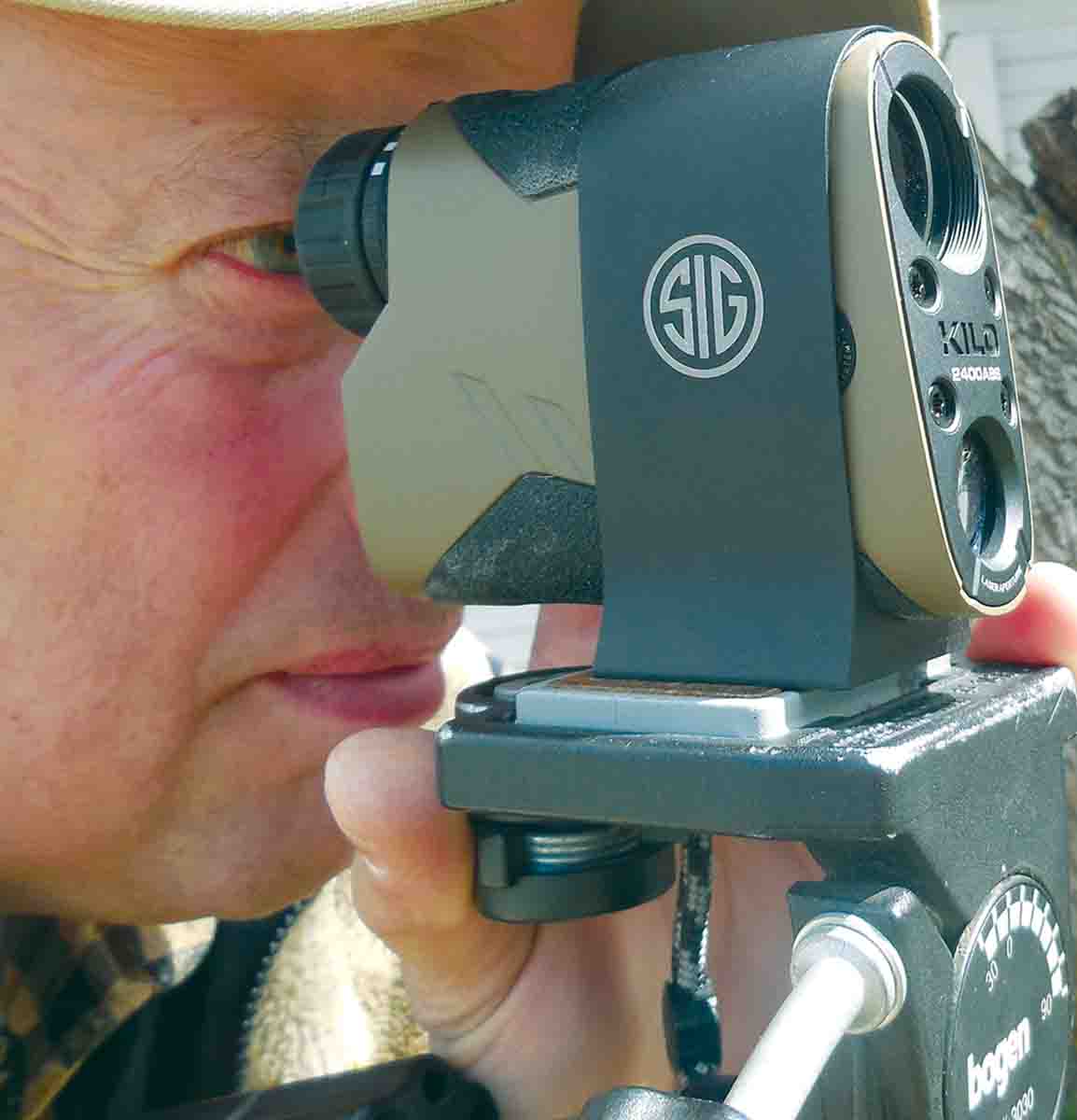A Rifleman's Optics
SIG Sauer KILO2400ABS Rangefinder
column By: John Haviland | September, 17
Every year, rangefinders take a stride forward with features well beyond simply displaying a distance. SIG Sauer’s KILO2400ABS Laser Rangefinder is one such innovative electro-optic rangefinder. The KILO includes an Applied Ballistics System calculator, bullet database and sensors that calculate shot angle, temperature, air density and altitude. Pairing the rangefinder with a tablet or smartphone and SIG’s Applied Ballistics application, information is keyed in to create a ballistic profile that can determine holdover to compensate for bullet drop, hold-off to counteract wind direction and velocity in milliradians or minutes of angle (MOA) for a specific cartridge.
The KILO is a 7x25mm monocular that SIG states will range deer up to 1,400 yards, trees to 1,800 yards and reflective objects up to 2 miles. On a partly cloudy morning just after sunrise, I ranged objects in the open foothills with the KILO. With a tree or large rock in the circular aiming reticle and pushing the ranging button, yardage for 550 to 1,300 yards instantly appeared in the display. Several times the KILO failed to register on objects when I did not hold it steady enough. A steady hold, though, provided distances up to 1,500 yards. While I was sitting on a hill, a white-tailed deer stood up from tall brown grass in a creek bottom below. The rangefinder showed 714 yards to it. The deer went into a stand of cottonwoods, and was tracked at 740 to 788 yards as it walked through the trees. A snow squall blew in, and I doubted the rangefinder would work at all through the snow, but it provided readings out to 345 yards.

I headed down to the creek to start my spring gopher campaign, pairing the KILO with the discontinued Redfield Battlezone TAC.22 2-7x 34mm scope mounted on a Ruger 10/22. The Battlezone elevation dial is a pop-up with resettable ¼-MOA adjustment and a bullet drop compensation (BDC) dial calibrated for distance from 50 to 150 yards set for .22 Long Rifle cartridges shooting 36-grain hollowpoint bullets with a muzzle velocity of 1,260 fps. Shooting showed bullet trajectory and the BDC dial meshed within a ground squirrel’s eye out to 150 yards.

Using the rangefinder was slow compared to eyeballing the range – aiming so much high or dialing the scope to the estimated range and firing. Often, a gopher had ducked into its burrow or disappeared into the grass before I could exchange the rangefinder for the rifle. The KILO showed its value when shooting at 75 yards and farther. It delivers distances to a tenth of a yard, and I turned the elevation dial on the TAC.22 scope to match the readings. One after another, four gophers were shot at 125 yards. The longest first-shot hit was at 134.7 yards. That’s about like hitting a deer at 700 yards.
An erratic wind came up, about enough to stir the peach fuzz in my ears. The scope’s reticle has hash marks with 2-MOA spaces on its horizontal wires with the scope set on 7x. One hash mark provided the correct spacing to compensate for the wind at 100 yards.
Advanced Operation

The rangefinder was now set to calculate wind and elevation holds. With the rangefinder aimed at a tree trunk, I pushed the ranging button; a distance of 561 yards immediately appeared. The elevation holdover of “Up 10.1 MOA” emerged seconds later, followed by a wind compensating hold of “Right 6.48 MOA.” Distance to a trailer registered 1,035 yards, followed by “Up 42.76 MOA” and “Right 15.63 MOA.”

The heads-up display (HUD) on the SIG application on my iPad is configured to display current range, holdover and environmental conditions from the paired KILO rangefinder. With the KILO mounted on a tripod and aimed at a target, pushing the ranging button on the HUD remotely fires the rangefinder. That removes human error. I mounted the rangefinder on a tripod and aimed it at a board fence on a far hill. Pushing the ranging button on the HUD displayed a distance of 915.7 yards after a few seconds. The rangefinder displayed 913.8 yards.
The SIG app also calculates and sets muzzle velocity and bullet drop from actual shooting at known distances by entering your actual shooting results in the “Custom Profile” in the “Gun Profiles” submenu. The “Environment” sub-menu shows the temperature, pressure and humidity data coming from the rangefinder’s sensors. These figures can be updated and controlled by an iPad or smartphone.
A Weatherflow WINDmeter is included with the KILO. My iPad and many new smartphones have no jack to plug it into, but that’s okay. Wind changes speed and direction from one second to the next along a bullet’s path. From watching instructors at rifle shooting schools, I noticed they do not solely rely on a wind meter to judge wind. Mostly they study vegetation and mirage movement, run the figures through the computer between their ears and pronounce an amazingly precise hold adjustment. When a rangefinder is developed to see mirage and vegetation movement and apply and display a compensating hold-off, rangefinders will have taken their final steps forward.


